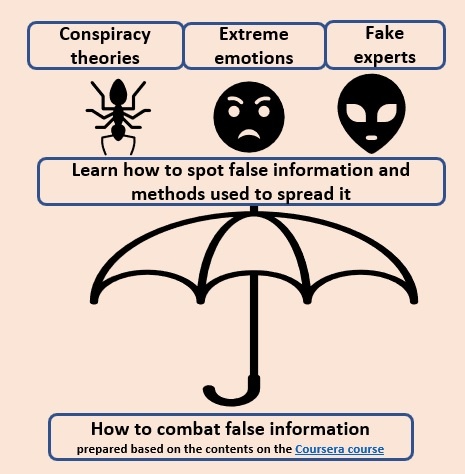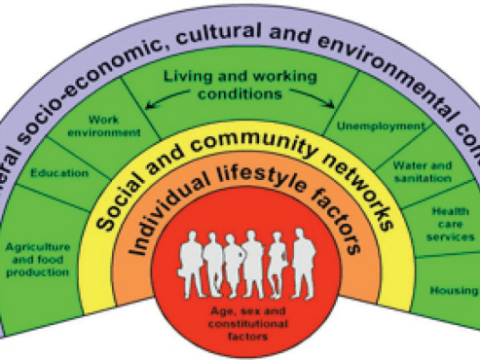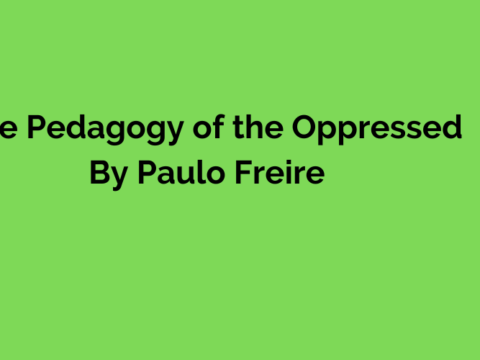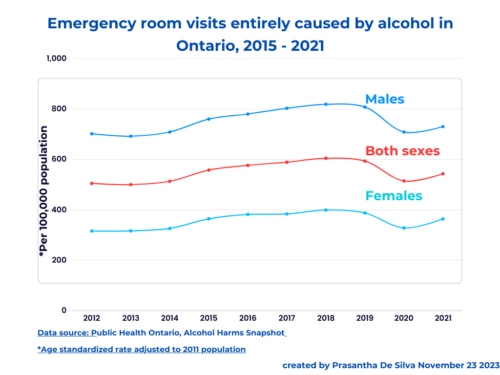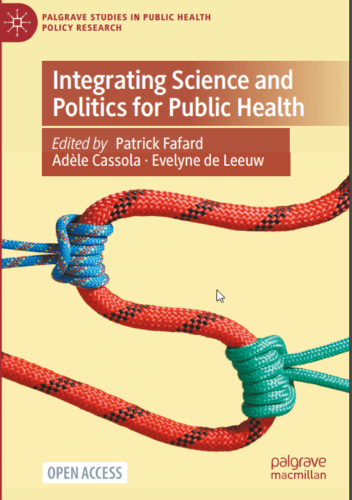
Three weeks before, I had to unlearn my learning about Maslow’s pyramid; it is not his. He did not build it to explain his theory about human motivation;
“Maslow did not build a pyramid to explain his theory”.
I read about it for the first time in a Scientific American article. It was titled “Who Created Maslow’s iconic pyramid? and written by Scott Barry Kaufman”.
Who built the pyramid?
The pyramid was built into Maslow’s theory more than a decade later after Maslow’s initial introduction in 1943. Charles McDermid, a management expert, introduced the pyramid into Maslow’s theory. We can find it in his 1960 article titled, “How money motivates men”.
Todd Bridgman, Stephen Cummings, and John Ballard in 2019 made this discovery.
There is no doubt that the pyramid has made Maslow’s theory very popular. Even today, we can find the model in almost all publications related to human motivation.
Does it matter?
That is the most interesting question to me than the previous one.
Let us see why does it matter?
Let us begin with Maslow’s theory of human motivation.
What is Maslow’s theory of human motivation?
Abraham Maslow introduced his theory of human motivation in 1943. In this article, Maslow wrote, “Some needs (such as food and safety) are more foundational than others (such as belongingness, love, esteem, and self-actualization).
Further, he also wrote;
“Lower physiological and security needs were placed on the bottom of a hierarchy of prepotency, meaning lower needs, like the physiological needs for food and safety, tend to be given priority over other needs when not satisfied”.
Maslow’s pyramid
I learnt Maslow’s theory in the pyramidal forms that appear below. These pyramids arrange human needs in a hierarchical order. Here, we can find physiological needs at the bottom, self-actualization at the top, and safety, love, and esteem in between. Much later, Maslow introduced self-transcendence over self-actualization according to Scott Barry Kaufman.
- Physiological (such as hunger);
- Safety;
- Love; (belonging was added later by himself);
- Esteem;
- Self-actualization.

Image source: Wikipedia
The critics of this pyramid model say that the pyramid does not accurately represent Maslow’s ideas about human motivation.
Let us see why.
A pyramid is hierarchical. The depictions of Maslow’s pyramid contain compartments.
According to Scott Barry Kaufman, once the basic needs such as hunger is satisfied “only we seek to fulfil higher needs, safety, love/belonging, esteem, and self-actualization in that order. The pyramid narrows itself at higher levels of needs and reaches a pinnacle: “Self-actualisation”.
We can find similar explanations in the healthcare field as well.
For example, read the following text that appears in Libretext Medicine.
“The needs are arranged in a hierarchy, which means they are arranged in order of importance. Maslow believed that people must meet the needs at the bottom of the hierarchy before they can successfully meet the next higher-up need”.
Then the text goes on to explain how home health aides/personal care aides can help their patients achieve their needs at each level.
“At the most basic levels are our physical needs. These include oxygen, food, activity, sleep, and elimination. Maslow believed that these needs must be met first before a person can go to meet other needs such as psychological needs”.
You can find similar descriptions in other textbooks from any field.
Now, let us explore Maslow’s other ideas about human motivation.
Focus on the following texts;
“People have partially satisfied needs and partially unsatisfied needs at the same time, that a lower level need may be only partially met before a higher-level need emerges, and that the order in which needs emerge is not fixed”.
And, further, he wrote,
“Our needs are interdependent and fluid”,
and,
“Any behaviour tends to be determined by several or all of the basic needs simultaneously rather than by only one of them”.
With those sentences, it is clear that we cannot use a pyramid to depict the theory accurately.
We also should not ignore that his thinking evolved over the years; he added more to it in his later presentations.
For example, in 1971, Maslow said,
“Human beings live by values; they live for values”.
Todd Bridgman and colleagues highlight that Maslow also mentioned several exceptions to his own theory; some people value higher needs such as self-esteem and self-actualisation over physiological needs. One classic example is “martyrs”; they seek self-sacrifice over their own bodily needs.
Maslow’s later additions to the theory
Timothy Yu explains Maslow’s theory by incorporating Maslow’s later additions to his original introduction. According to him, the theory includes two halves: D-needs (deficiency needs) and B-needs (Being/growth needs). For an optimal life, we need to maintain a balance between the two. You can read a more detailed, thought-provoking discussion about the D-needs and B-needs in his paper.
Do we have empirical evidence to support Maslow’s theory?
No.
According to Tod Bridgman and colleagues, we do not have convincing empirical evidence to support Maslow’s ideas. An excellent summary of their exploration appears on this website.
Alternative models to the pyramid model:
Several experts have proposed alternative models to the pyramid. Let us explore those.
Ladder model
Todd Bridgman and colleagues suggest a ladder model as a better alternative to the pyramid model. They argue that when we use the ladder, we hold several steps at any given time. Therefore, it better reflects Maslow’s overlooked proposition: “Any behaviour tends to be determined by several or all of the basic needs simultaneously rather than by only one of them”.
Sailboat model
Scott Barry Kaufman introduces a sailboat as an alternative to Maslow’s pyramid. The sailboat consists of two halves, similar to the D-needs (deficiency needs) (security) and B-needs (being needs) (growth). Timothy Lu says it has two shortcomings: One is that it is static similar to the pyramid model; the next is that it also projects the idea that one has to meet one set of needs to move into the next set.

Mike Sosteric’s Circular model
Mike Sosteric proposes a circular model instead of the pyramid to further Maslow’s theory of human motivation. He names it as the “circle of seven essential human needs”; it is as follows;
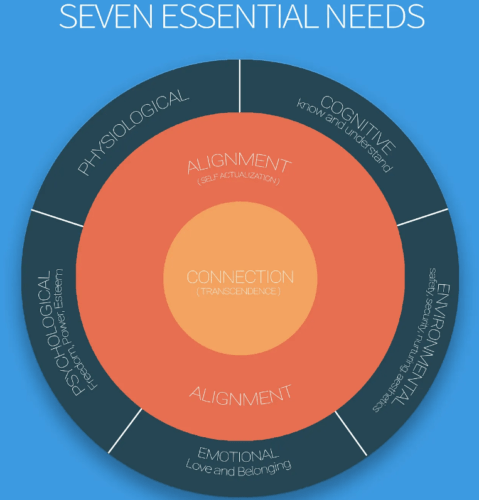
Image source: Medium
The above model appears in his article published in Medium.
Introducing the model, he summarises Maslow’s theory in three sentences;
- To make good humans, create a good society,
- To make a good society, make sure the society meets all human needs,
- Evile humans are created by societies that fail to meet all human needs.
Dennis Hambeukers’ Circular model
Dennis Hambeukers, a design thinkker. brings another thought-provoking set of arguments for a circular model. He argues the dangers of thinking in a hierarchical way similar to Maslow’s pyramid. He argues that this linear thinking of self-actualization is destroying the world.
Instead, Dennis explores ways in which we can think of a circular model. He proposes the following model;
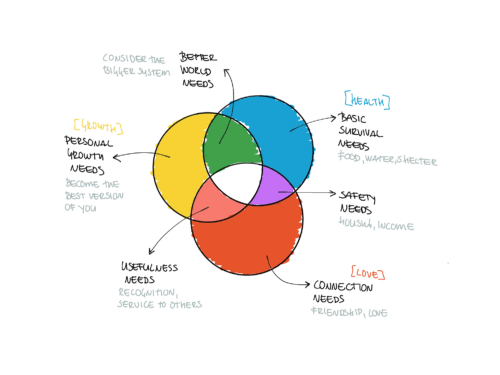
You can find more details about his proposition in this link.
Critics of Maslow’s model from different lenses.
Now, we explore the critics of the model from different lenses.
Through a political lens: It promotes elitism and individualism.
Todd Bridgman and colleagues opine that Maslow’s model “captured the ideologies of individualism, nationalism, and capitalism that prevailed in America after the Second World War. Its incorporation into a pyramidal shape seemed to have propelled the theory into the forefront of the management field.
The model promotes neo-liberal thinking and focuses only on personal growth.
Similar to that sentiments, Mike Sosteric also sees the model through a political lens.
He argues that the model promotes the dominant “neo-liberal thinking” because it focuses only on personal growth.
Arguing further, he opines that the personal growth narrative “perfectly aligns with Capitalism”.
According to him, that could be one reason for-profit company managers show a strong affinity to the pyramid model. He writes that the managers could use the model “to exploit employees to work harder and remain faithful to the company” and “it promotes individualism over the collectivist needs and values”.
The model cannot be applied to all cultures.
Maslow never said that his theory was applicable to all societies according to Mike Sosteric. According to him, Malsow developed his theory by observing key figures in Western culture.
Through an Indigenous lens:
Finally, the most important critique comes from an indigenous perspective according to my view. This critic revolutionizes the whole concept of human needs, particularly regarding Maslow’s concept of self-actualization because Maslow focuses it on a personal level.
Although Maslow interacted with Native Americans, particularly with the “Blackfoot” tribe and valued their thinking, he did not include it in his theory. We can find a very interesting account of this in this article, the Blackfoot wisdom that inspired Maslow.
This s another interesting article: Could Siksika wisdom that inspired Maslow guide us now?
The indigenous lens is much broader; for them, actualization and transcendence are at the community level because “we all are part of transcendence”.
Writing an article for “Psychology Today” Steve Taylor, writes that Maslow discovered “to most Blackfoot members, wealth was not important in terms of accumulating property and possessions: Giving it away was what brought on the true status of prestige and security in the tribe.”

